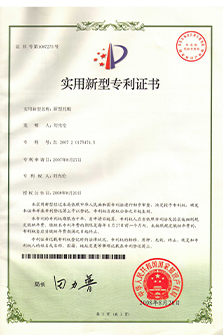 Afrikaans
Afrikaans  Albanian
Albanian  Amharic
Amharic  Arabic
Arabic  Armenian
Armenian  Azerbaijani
Azerbaijani  Basque
Basque  Belarusian
Belarusian  Bengali
Bengali  Bosnian
Bosnian  Bulgarian
Bulgarian  Catalan
Catalan  Cebuano
Cebuano  Corsican
Corsican  Croatian
Croatian  Czech
Czech  Danish
Danish  Dutch
Dutch  English
English  Esperanto
Esperanto  Estonian
Estonian  Finnish
Finnish  French
French  Frisian
Frisian  Galician
Galician  Georgian
Georgian  German
German  Greek
Greek  Gujarati
Gujarati  Haitian Creole
Haitian Creole  hausa
hausa  hawaiian
hawaiian  Hebrew
Hebrew  Hindi
Hindi  Miao
Miao  Hungarian
Hungarian  Icelandic
Icelandic  igbo
igbo  Indonesian
Indonesian  irish
irish  Italian
Italian  Japanese
Japanese  Javanese
Javanese  Kannada
Kannada  kazakh
kazakh  Khmer
Khmer  Rwandese
Rwandese  Korean
Korean  Kurdish
Kurdish  Kyrgyz
Kyrgyz  Lao
Lao  Latin
Latin  Latvian
Latvian  Lithuanian
Lithuanian  Luxembourgish
Luxembourgish  Macedonian
Macedonian  Malgashi
Malgashi  Malay
Malay  Malayalam
Malayalam  Maltese
Maltese  Maori
Maori  Marathi
Marathi  Mongolian
Mongolian  Myanmar
Myanmar  Nepali
Nepali  Norwegian
Norwegian  Norwegian
Norwegian  Occitan
Occitan  Pashto
Pashto  Persian
Persian  Polish
Polish  Portuguese
Portuguese  Punjabi
Punjabi  Romanian
Romanian  Russian
Russian  Samoan
Samoan  Scottish Gaelic
Scottish Gaelic  Serbian
Serbian  Sesotho
Sesotho  Shona
Shona  Sindhi
Sindhi  Sinhala
Sinhala  Slovak
Slovak  Slovenian
Slovenian  Somali
Somali  Spanish
Spanish  Sundanese
Sundanese  Swahili
Swahili  Swedish
Swedish  Tagalog
Tagalog  Tajik
Tajik  Tamil
Tamil  Tatar
Tatar  Telugu
Telugu  Thai
Thai  Turkish
Turkish  Turkmen
Turkmen  Ukrainian
Ukrainian  Urdu
Urdu  Uighur
Uighur  Uzbek
Uzbek  Vietnamese
Vietnamese  Welsh
Welsh  Bantu
Bantu  Yiddish
Yiddish  Yoruba
Yoruba  Zulu
Zulu Understanding Roller Lagging Techniques for Enhanced Conveyor Efficiency and Durability
Understanding Roller Lagging Enhancing Conveyor System Efficiency
In the world of material handling, the efficiency and reliability of conveyor systems are paramount. Among the various methods used to improve these systems, roller lagging has emerged as a significant solution. Roller lagging refers to the process of covering roller surfaces with a particular material to enhance traction, reduce wear, and improve the overall performance of conveyor belts. This practice is especially common in industries where heavy loads and high-speed operations are regular occurrences.
The Importance of Roller Lagging
Conveyor systems are critical for the seamless movement of goods in various sectors, including mining, manufacturing, and logistics. Over time, the rollers in these systems can wear down due to friction and heavy loads, leading to decreased performance and increased downtime for maintenance. Roller lagging serves to mitigate these issues by providing a protective layer that reduces wear on the rollers while also providing better traction for the conveyor belt. This not only prolongs the lifespan of the roller components but also enhances the efficiency of the entire system.
Types of Roller Lagging Materials
There are several materials that can be used for roller lagging, each offering distinct advantages depending on the application. Common materials include rubber, polyurethane, and polyvinyl chloride (PVC). Rubber lagging is widely favored for its excellent grip and resistance to abrasion, making it suitable for high-friction environments. Polyurethane offers superior durability and flexibility, making it ideal for dynamic applications where flexibility and weight are concerns. PVC, on the other hand, is often chosen for its lightweight properties and cost-effectiveness, although it might not provide the same level of wear resistance as rubber.
Benefits of Roller Lagging
roller lagging

The benefits of roller lagging extend beyond just wear reduction. One of the most significant advantages is the improved traction it provides. Enhanced grip between the roller and the conveyor belt reduces slippage, which can lead to uneven wear and inefficient material transfer. This improvement in traction also results in a smoother operation, ultimately leading to increased productivity. Additionally, roller lagging can contribute to safer operations by minimizing the risk of materials falling off the conveyor due to slippage.
Moreover, roller lagging can significantly reduce noise levels associated with conveyor operations. The cushioning effect provided by the lagging material dampens vibrations and impacts, leading to a quieter working environment. This is particularly important in settings where noise regulation is required or where workers need to communicate clearly over equipment sounds.
Maintenance and Replacement Considerations
Despite its benefits, roller lagging does require periodic maintenance and replacement to ensure optimal performance. Factors such as operating conditions, load types, and environmental factors like temperature and moisture can impact the lifespan of the lagging material. Regular inspections are advisable to identify wear signs early and make necessary replacements before more significant problems arise.
When it comes time for replacement, selecting the right type of lagging material that matches the specific demands of the application is crucial. Consulting with industry experts can help in making informed choices that uphold system efficiency and reliability.
Conclusion
In conclusion, roller lagging is a valuable technique in enhancing the performance of conveyor systems across various industries. Its ability to improve traction, reduce wear, and lower noise levels contributes significantly to operational efficiency and safety. As industries continue to evolve with increasing demands for productivity, adopting roller lagging will remain a pivotal strategy in optimizing conveyor systems and ensuring smooth, effective material handling.
-
Revolutionizing Conveyor Reliability with Advanced Rubber Lagging PulleysNewsJul.22,2025
-
Powering Precision and Durability with Expert Manufacturers of Conveyor ComponentsNewsJul.22,2025
-
Optimizing Conveyor Systems with Advanced Conveyor AccessoriesNewsJul.22,2025
-
Maximize Conveyor Efficiency with Quality Conveyor Idler PulleysNewsJul.22,2025
-
Future-Proof Your Conveyor System with High-Performance Polyurethane RollerNewsJul.22,2025
-
Driving Efficiency Forward with Quality Idlers and RollersNewsJul.22,2025





























